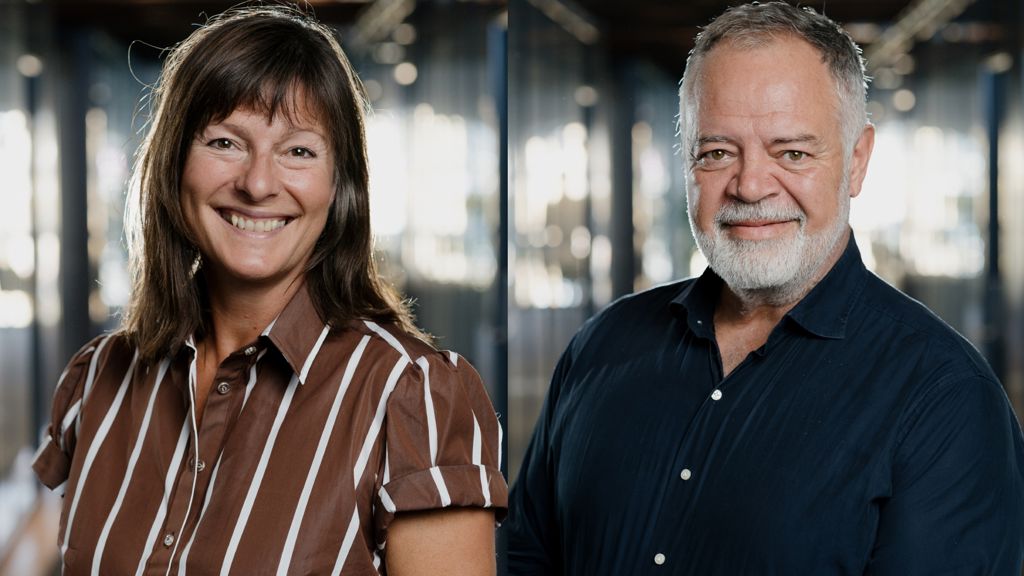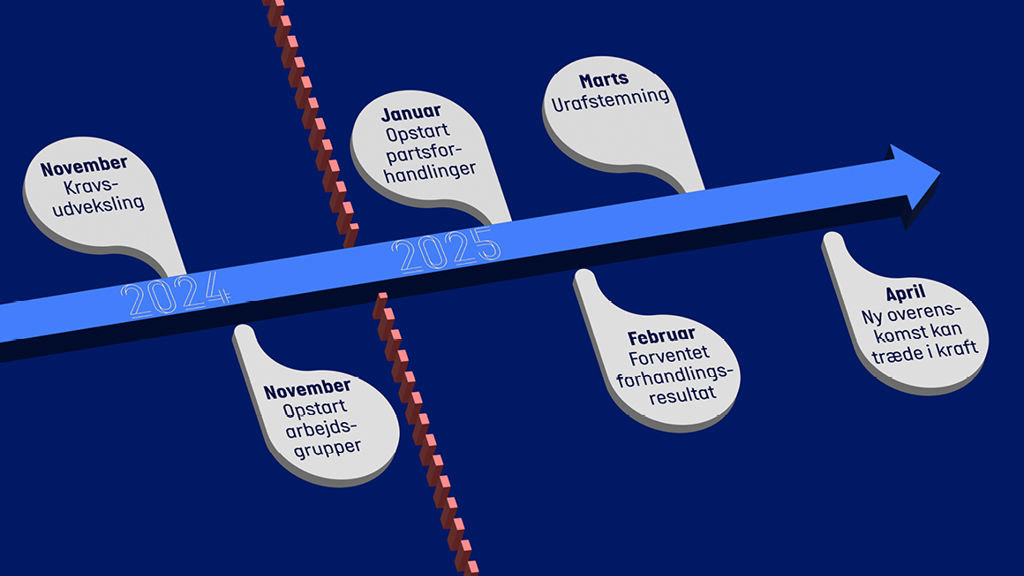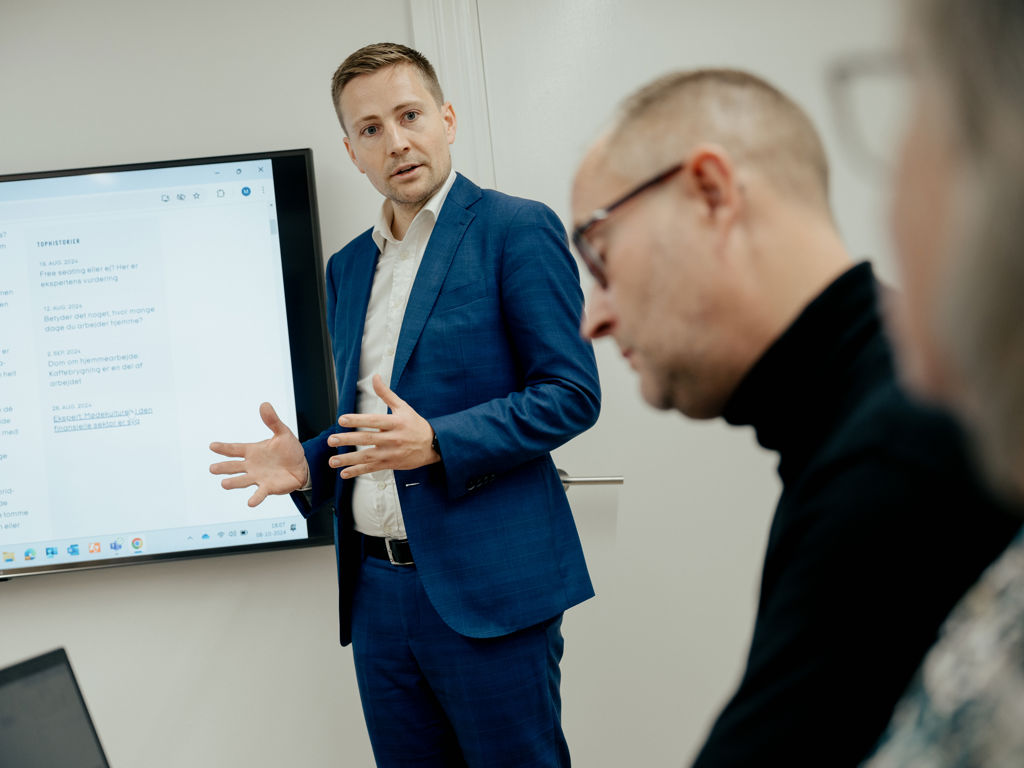Understanding the collective bargaining process: A glimpse behind the scenes
What do House of Cards and card games have to do with collective bargaining? Finansforbundet's two experienced negotiators take you behind the scenes and give you a glimpse of how a collective agreement comes into existence.

A lengthy process
Most people do not think about collective bargaining until the date of a new agreement approaches, but, in fact, the process begins 18 months prior to adding the final signatures.
This is when Finansforbundet’s Executive Committee decides on which plan to go ahead with.
"It's a lengthy process, which is organised in detail through a process description and broken down into specific activities," explains Steven Vallik.
The first step is a survey among our members to uncover their expectations for a new collective agreement.
Then, the requests are funnelled through the local unions of Finansforbundet that try to identify which requirements to make. The deadline for this work is mid-August.
After the summer holidays, the requirements are adjusted by eliminating those of a similar nature. Now, Finansforbundet initiates a number of political processes by means of Executive Committee meetings and a bargaining conference.
"At these meetings, we’re given an overall mandate to move forward," says Steven Vallik.
In October, the requirements are exchanged with the employers, and that brings us to the part of the process that is currently in progress.
This is why the collective agreement matters
Concluding the collective agreement takes considerable effort, but why is it important to you?
"It's a legally binding agreement that sets out the minimum terms for your employment," Steven Vallik explains, while Marianne Kjær adds:
"Key to a collective agreement is that it cannot be changed unilaterally. It requires an agreement. You may be hired and fired at any time, but these minimum terms can’t be changed unless we come to an agreement with the employers."
Fine-tuning of requirements
The requirements contributed by Finansforbundet this time and the employers' demands, which are more thematic, have been divided into topics and are currently being processed by three working groups.
The working groups will determine if further technical investigations are needed, and, ultimately, their work will lead to a number of recommendations.
And once we reach January, the final haggling will begin. Steven Vallik and Marianne Kjær will be there joined by Vice Presidents of Finansforbundet, Jakob Thorgaard and Steen Lund Olsen, and President Dorrit Brandt who acts as chief negotiator.

New faces at both sides of the table
This is the first time Dorrit Brandt and Jakob Thorgaard are participating in the central negotiations, but there are also new faces on the employers’ side of the table.
As the Danish Employers' Association for the Financial Sector (FA), which was previously in charge of the negotiations on behalf of the banks, has been disbanded, it is instead Finance Denmark/Employer, headed by CEO Morten Schønning Madsen, which will join the negotiations.
And having new faces on both sides of the table is a good thing according to the two experienced negotiators.
"It provides an opportunity to rethink things and not get stuck in the old ways," says Marianne Kjær.
However, neither she nor Steven Vallik want to offer their opinion on how the current negotiations will turn out.
Negotiating on behalf of 46,000 financial sector employees
The two have learnt a lot from their year-long involvement. Not least about each other. And they make a great team.
“We’re a good team. And obviously, you learn a thing or two along the way, but I don't learn what Marianne knows and Marianne doesn't learn what I know," Steven Vallik explains.
The collective agreement under negotiation covers 116 companies and 46,000 employees of the country's banks, mortgage credit institutions and data centres.
Once in the room, the two experienced dealers are under no pressure.
"But we take the job very seriously, and you need a steady hand on the wheel," says Marianne Kjær.
Netflix and card games on the Conciliation Board
In the years that Steven Vallik and Marianne Kjaer have been involved, they have taken part in giving notice of industrial action a couple of times.
Specifically, this means convening both parties to a meeting with the Conciliation Board, at which the official conciliator will act as mediator. During the most recent negotiations in 2023, Finansforbundet gave notice of industrial action before an agreement was concluded, but in 2014, a labour dispute came even closer when as mush as two notices of industrial action were given.
And especially the hours spent with the Conciliation Board may turn out to be a lengthy affair. Because you are not allowed to leave Skt. Annæ Plads, where the Board is located, until the official conciliator gives you permission.
"You show up when you’re summoned by the official conciliator, and you can't leave. That’s the power they have.” They’re permitted to keep people on site until they’re so tired that they’ll accept any offer," Steven Vallik says with a laugh.
The hours may be long because there is not much you can do while waiting. As a consequence, you may spend your time in different ways.
"If things are progressing, we’re obviously working and will be preparing the final protocol and so on. But there are times when not much is happening. In the old days we played cards, but I believe I managed to watch a whole season of 'House of Cards' in 2014," says Marianne Kjær.
No cornflakes for 14-year-old daughter
Over the years, they have been involved in many agreements that they are proud of. However, not everyone has been able to see the value at the time.
Marianne Kjær talks about the first agreement she was a part of in 2012.
"My 14-year-old daughter was spending the night at a friend's house whose parents both worked in a bank. At breakfast, they hinted that she couldn't have cornflakes because her mom had entered such a poor agreement," she laughs.
And yet, this is one of the agreements that stands for her.
"We took a lot of flak for that agreement because the pay increase was really low; one per cent per year. But instead, we achieved a range of benefits we are still enjoying today,” she says and lists: time bank, flexitime, mitigations. I’m really proud of that agreement.”
So is Steven Vallik, who highlights the time bank as the benefit he is most proud of.
He explains that Finansforbundet's position in the labour market as a member of the Danish Trade Union Confederation (FH), but without being linked with the other trade unions, provides special room for creativity.
"It has allowed us to carry out a number of sector-specific and quite unique things. That is, unique in the sense that they are suited to our sector, but not necessarily easy to transfer to other parts of the private labour market. And that autonomy is extremely valuable,” explains Steven Vallik. Marianne Kjær agrees:
"When I think about how many cool things we've been involved in over the past 14 years, for example dental insurance and equality in the maternity/paternity area," she says.
Long road to finalisation and speeches
We do not yet know how it will turn out when Steven Vallik, Marianne Kjær and the presidency of Finansforbundet show up at Finance Denmark with bags packed with extra jumpers and toothbrushes.
Many things need to fall into place before the parties can shake hands and drink sour white wine as they usually do when they have reached an agreement.
But the negotiators have already learnt one thing. Where previously, Finansforbundet served the best snacks at the negotiating table, there has been a change.
"FA used to give our snacks a wistful look, but Finance Denmark has really upped its game," Marianne Kjær laughs.





